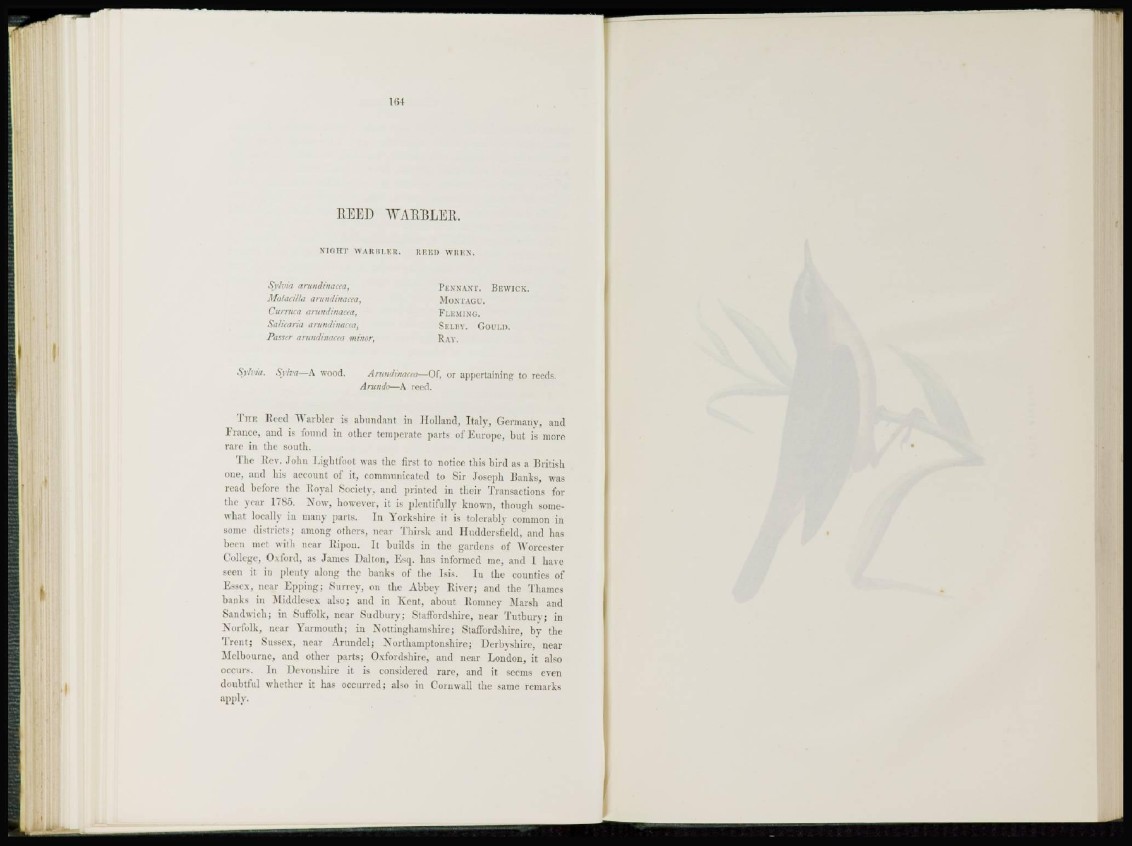
REED WARBLER.
RIGHT wAK111.Kit. RBBTJ WRVN.
Sylvia arundinaeea. PENNANT. BEWICK.
Motacilla arundinaeea, MONTAGU.
Curruca arundinaeea, FLEMING.
Salicaria arundinaeea, SlLBY. GOULD.
Passer arundinaeea minor, RAY.
Sylvia. Sylva—A wood. Arundinaeea—(If, or appertaining to reeds,
Aru/ido—A reed.
T H E Reed Warbler is abundant in Holland, Italy, Germany, and
France, and is found in other temperate parts of Europe, but is more
rare In the south.
The Rev. John Light font was t he first to notice this bird as a British
one. and his account of it, communicated to Sir Joseph Banks, was
read before the Royal Society, and printed in their Transactions for
the year 1785. Now, however, it is plentifully known, though somewhat
locally in many parts. In Yorkshire if is tolerably common in
some districts; among others, near Thirsk and Huddersfiehl, and has
been met with near Ripen. It builds in the gardens of Worcester
College, Oxford, as James Dalton, Esq. has informed me, and 1 have
seen it in plentv along the banks of the lsis. In the counties of
Essex, near Epping; Surrey, on the Abbey Riverj and the Thames
banks in Middlesex also; and in Kent, about Romuev Marsh and
Sandwich; in Suffolk, near Sudbury; Staffordshire, near Tutbury; in
N orfolk, near Yarmouth; in Nottinghamshire; Staffordshire, by the
T r e n t ; Sussex, near Arundel; Northamptonshire; Derbyshire, near
Melbourne, and other parts; Oxfordshire, and near London, it also
occurs. In Devonshire it is considered rare, and it seems even
doubtful whether it has occurred; also in Cornwall the same remarks
apply.